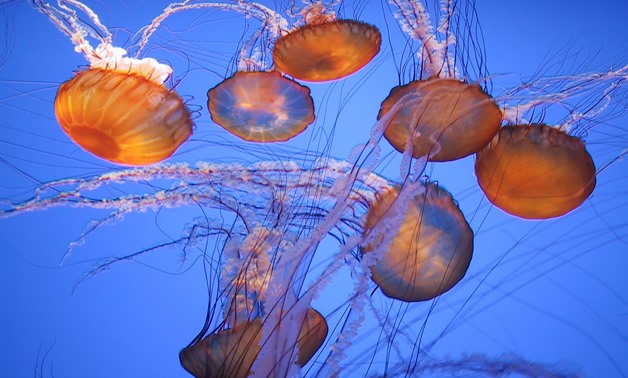
Jellyfish on Egyptian shores are stinging but not poisonous – CC via Flickr/NBphotostream
CAIRO – 9 July 2017: The Minister of Environment Khaled Fahmy said that environment experts cannot specify whether the species of jellyfish invading the north coast are edible or not, and it is not known if they are served as food in other countries or not. He added that Health Ministry is studying them in nutrition laboratories and the Food Safety Institute.
The Ministry of Environment has been studying the jellyfish invasion of the north coast phenomenon which began in July. A preliminary report has been submitted to the cabinet, while a detailed report is being prepared.
The Ministry has been cooperating with the ministries of health, agriculture, higher education and local development to study the phenomenon and its impact, and to ensure the safety of citizens.
Fahmy told Egypt Today that a task force consisting of experts from the Ministry of Environment, the Ministry of Scientific Research, the Marine Science Institute and Suez Canal University was formed to observe the jellyfish.
The Minister said on Saturday that a press conference will be held next week to announce the findings.
Fahmy warned citizens about eating these jellyfish because the kind of nutritional affects have not been analyzed yet. Also, the type and quantity of jellyfish must be analyzed first before deciding on whether to export them or not, clarifying that main export destinations for jellyfish are China and South Korea.
The Minister said that the project’s proposal will be studied in a university to determine the economic profitability. It may turn out to be unprofitable due to the seasonal availability of jellyfish on Egyptian coasts, and they are not always found in large enough quantities.
The jellyfish numbers have been decreasing on the north coast while increasing on the shores of Baltim and Port Said as their locations are determined by marine currents flowing counter clockwise.
Fahmy explained that studies of environmental phenomena are conducted on regional and international scales which would be achieved through reports exchange between countries. That is because such phenomena are associated with international courses. For instance, it is possible that the current phenomenon in Egypt had originated in one of the north Mediterranean countries.
The Minister affirmed that no major injuries occurred and that the type existing in Egypt is not poisonous, stressing that people should not confuse the blue jellyfish on our coasts with poisonous ones of the same color.
The type of jellyfish, whether poisonous or stinging, is determined by a microscopic analysis. Poisonous jellyfish cause great health damage with a single sting. The animal protein they produce affects the blood circulation negatively.
The stinging type causes a superficial effect on the skin through an alkaline substance causing inflammation. It may affect health in the same condition that is similar to being stung multiple times at once. In that case, the harm is determined by the number of stings, and the health condition of the patient.
Fahmy concluded that the most effective and eco-friendly method to keep away jellyfish is extending a net around the shores where swimming activities take place, which he recommends hotels and resorts implement. Some hotel have adopted that method and been very successful.
Comments
Leave a Comment